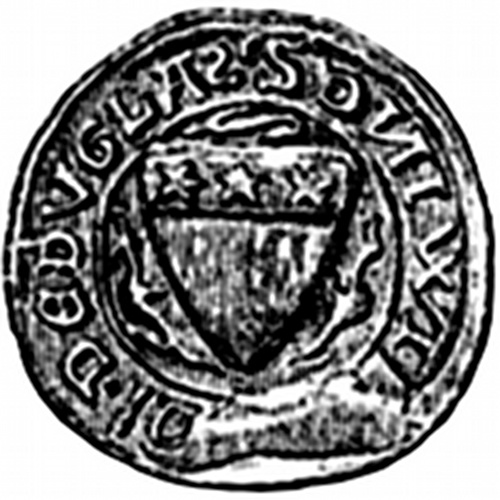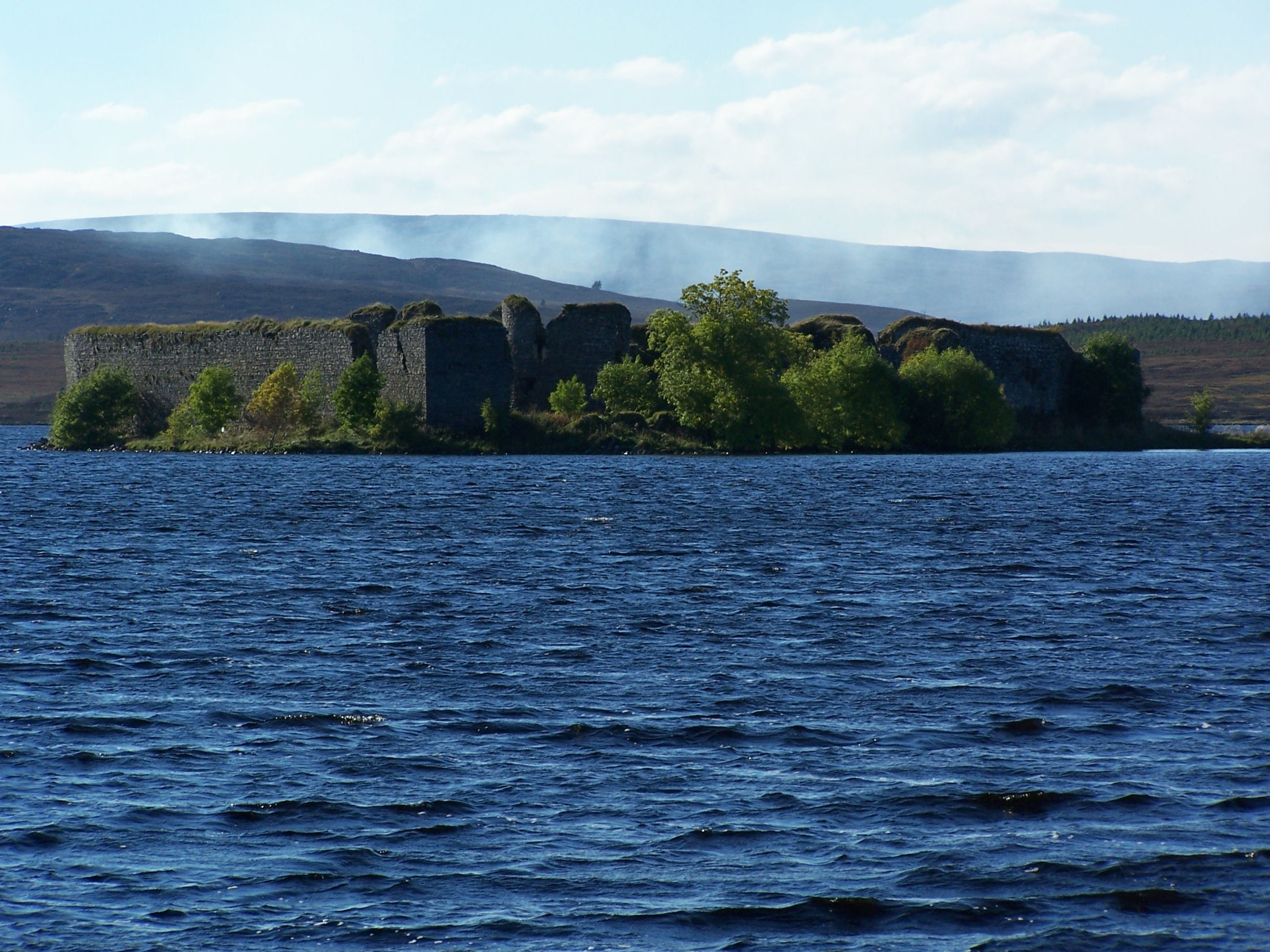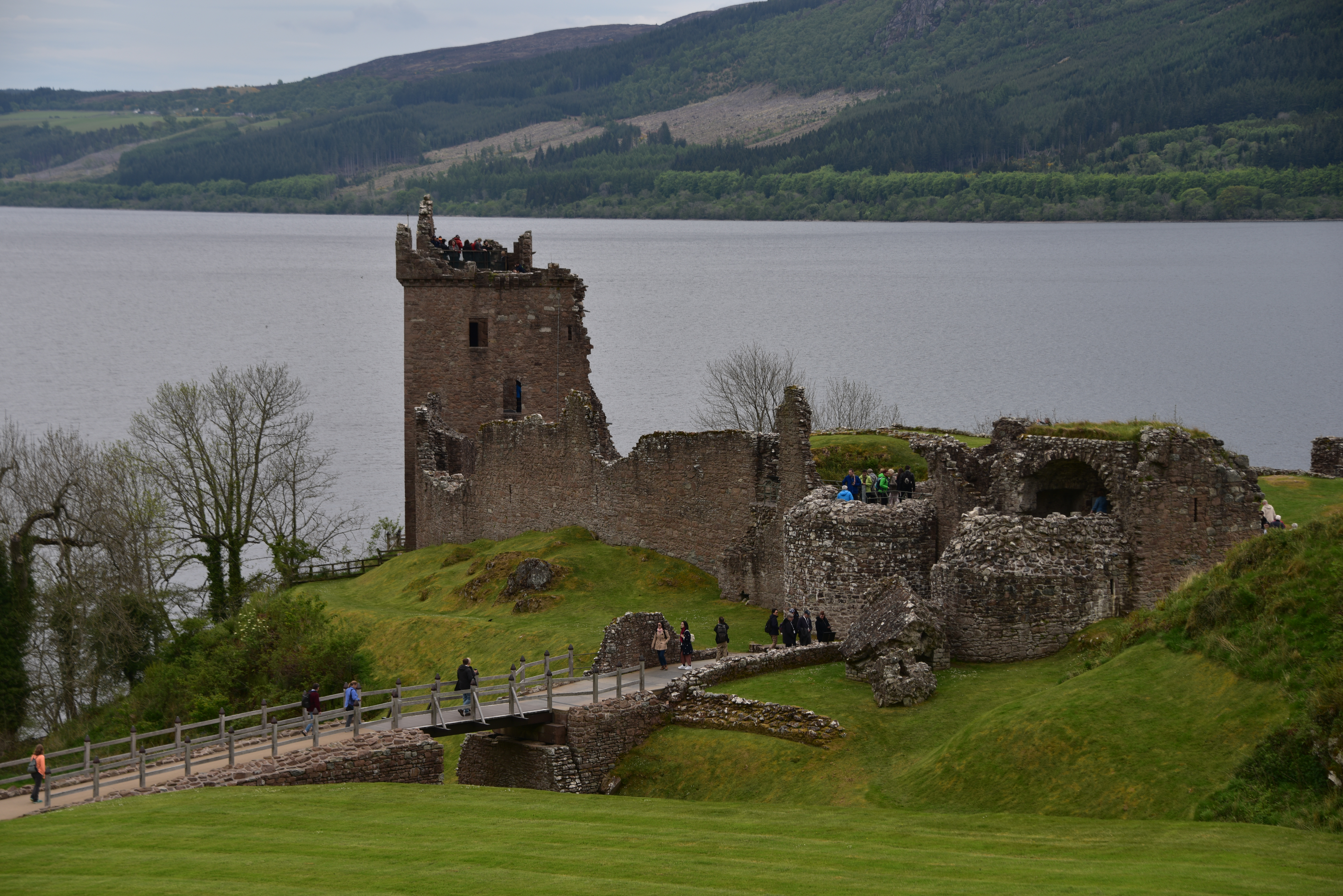|
Domhnall, Lord Of The Isles
Donald, Lord of the Isles ( gd, Dómhnall; died 1423), was the son and successor of John of Islay, Lord of the Isles and chief of Clan Donald. The Lordship of the Isles was based in and around the Scottish west-coast island of Islay, but under Donald's father had come to include most of isles and the lands of Somerled, the King of the Isles in the 12th century, Donald's predecessor, including Morvern, Garmoran, Lochaber, Kintyre and Knapdale on the mainland. Donald was the grandson of King Robert II of Scotland and first cousin of King Robert III; he took pride in his royal blood, even adopting the royal tressure to surround his coat of arms. While it is customary to portray the Lords of the Isles as divorced from the mainstream of Scottish political life, and as representatives of a brand of lordship distinct from the rest of Scotland, this view obscures the fact that Donald was only one of many magnates who held large lordships with little interference from the crown in l ... [...More Info...] [...Related Items...] OR: [Wikipedia] [Google] [Baidu] |
Oronsay Priory
Oronsay Priory was a monastery of canons regular on the island of Oronsay, Inner Hebrides, Argyll, off the coast of Scotland. It was in existence by 1353 under the patronage of John of Islay, Lord of the Isles. It was dedicated to St. Columba, and perhaps was a continuation or a re-activation of an older foundation. Very little is known about it because of the absence of records and its remoteness from the Scottish Lowlands, but on occasions some of the Priors of Oronsay come into the records. The Priory The priory continued in operation until at least 1560, the year of the Scottish Reformation, with the last known prior, Robert Lamont, having been elected in 1555. The lands and property of the priory were given ''in commendam'' to Maol Choluim MacDubhthaich in 1561. They were later given to the Bishop of the Isles by King James VI of Scotland after his ascendancy to the throne in 1583. Restoration work and excavation and recording were carried out in 1883 by the architect Willi ... [...More Info...] [...Related Items...] OR: [Wikipedia] [Google] [Baidu] |
Clan Douglas
Clan Douglas is an ancient clan or noble house from the Scottish Lowlands. Taking their name from Douglas in Lanarkshire, their leaders gained vast territories throughout the Borders, Angus, Lothian, Moray, and also in France and Sweden. The family is one of the most ennobled in the United Kingdom and has held numerous titles. The Douglases were one of Scotland's most powerful families,Way, George and Squire, Romily. (1994). ''Collins Scottish Clan & Family Encyclopedia''. (Foreword by The Rt Hon. The Earl of Elgin KT, Convenor, The Standing Council of Scottish Chiefs). pp. 384 – 385. and certainly the most prominent family in lowland Scotland during the Late Middle Ages, often holding the real power behind the throne of the Stewart Kings . The heads of the House of Douglas held the titles of the Earl of Douglas (Black Douglas) and later the Earl of Angus (Red Douglas). The clan does not currently have a chief recognised by the Lord Lyon. The principal Douglas today is the ... [...More Info...] [...Related Items...] OR: [Wikipedia] [Google] [Baidu] |
Earl Of Buchan
The Mormaer () or Earl of Buchan () was originally the provincial ruler of the medieval province of Buchan. Buchan was the first Mormaerdom in the High Medieval Kingdom of the Scots to pass into the hands of a non-Scottish family in the male line. The earldom had three lines in its history, not counting passings from female heirs to sons. Today, it is held by the Erskine family as a peerage. The current holder is Harry Erskine, 18th Earl of Buchan (b. 1960). Mormaerdom of Buchan The first recorded person who definitely held the position of mormaer was Gartnait, Earl of Buchan, Gartnait, whose patronage is noted in the Middle Irish, Gaelic Notes on the ''Book of Deer''. The latter is the only significant source for the mormaerdom, and its existence makes Buchan one of Scotland's best documented provinces for native cultural institutions. After the death of Fergus, Earl of Buchan, Fergus, before 1214, Buchan became the first native mormaerdom to pass into the hands of a foreign fa ... [...More Info...] [...Related Items...] OR: [Wikipedia] [Google] [Baidu] |
Lord Of Badenoch
Lord is an appellation for a person or deity who has authority, control, or power over others, acting as a master, chief, or ruler. The appellation can also denote certain persons who hold a title of the peerage in the United Kingdom, or are entitled to courtesy titles. The collective "Lords" can refer to a group or body of peers. Etymology According to the Oxford Dictionary of English, the etymology of the word can be traced back to the Old English word ''hlāford'' which originated from ''hlāfweard'' meaning "loaf-ward" or "bread-keeper", reflecting the Germanic tribal custom of a chieftain providing food for his followers. The appellation "lord" is primarily applied to men, while for women the appellation "lady" is used. This is no longer universal: the Lord of Mann, a title previously held by the Queen of the United Kingdom, and female Lords Mayor are examples of women who are styled as "Lord". Historical usage Feudalism Under the feudal system, "lord" had a wide ... [...More Info...] [...Related Items...] OR: [Wikipedia] [Google] [Baidu] |
John Randolph, 3rd Earl Of Moray
John Randolph, 3rd Earl of Moray (died 17 October 1346) was an important figure in the reign of David II of Scotland, and was for a time joint Regent of Scotland. Family He was son of the famous Thomas Randolph, 1st Earl of Moray, a companion-in-arms of Robert the Bruce. Upon the death of his elder brother Thomas, 2nd Earl at the Battle of Dupplin Moor in 1332, John succeeded to the earldom. He was brother to Agnes Randolph, Countess of Dunbar, sometimes referred to as "Black Agnes". His sister Isobel's daughter Agnes Dunbar, was the mistress of David II of Scotland. Military campaigns He at once took up arms on behalf of his sovereign and cousin King David II and surprised and defeated Edward Balliol at the Battle of Annan in December 1332. At the Battle of Halidon Hill on 19 July 1333, he commanded the first division of the Scots' Army, supported by Sir Andrew Fraser and his two brothers, Simon and James. Escaping from the carnage there he retired to France. Regency John r ... [...More Info...] [...Related Items...] OR: [Wikipedia] [Google] [Baidu] |
Alexander Stewart, Earl Of Buchan
Alexander Stewart, Earl of Buchan, Alasdair Mór mac an Rígh, and called the Wolf of Badenoch (1343 – c. 20 July 1405), was the third surviving son of King Robert II of Scotland and youngest by his first wife, Elizabeth Mure of Rowallan. He was the first Earl of Buchan since John Comyn, from 1382 until his death. Alexander married the widowed Euphemia I, Countess of Ross, but they had no children. He did have a large family by his longtime mistress, Mairead inghean Eachainn. Alexander was Justiciar of Scotia for a time, but not an effective one. He held large territories in the north of Scotland before eventually losing a large part of them. Alexander is remembered for his destruction of the royal burgh of Elgin and its cathedral. His nickname was earned due to his notorious cruelty and rapacity, but there is no proof that it was used during his lifetime. Power and influence Known in charters as Alexander ''Senescalli'' (Latin for Steward), first noted when, on 14 August 13 ... [...More Info...] [...Related Items...] OR: [Wikipedia] [Google] [Baidu] |
Urquhart Castle
Urquhart Castle (; gd, Caisteal na Sròine) is a ruined castle that sits beside Loch Ness in the Highlands of Scotland. The castle is on the A82 road, south-west of Inverness and east of the village of Drumnadrochit. The present ruins date from the 13th to the 16th centuries, though built on the site of an early medieval fortification. Founded in the 13th century, Urquhart played a role in the Wars of Scottish Independence in the 14th century. It was subsequently held as a royal castle and was raided on several occasions by the MacDonald Earls of Ross. The castle was granted to the Clan Grant in 1509, though conflict with the MacDonalds continued. Despite a series of further raids the castle was strengthened, only to be largely abandoned by the middle of the 17th century. Urquhart was partially destroyed in 1692 to prevent its use by Jacobite forces, and subsequently decayed. In the 20th century, it was placed in state care as a scheduled monument and opened to the publi ... [...More Info...] [...Related Items...] OR: [Wikipedia] [Google] [Baidu] |
Badenoch
Badenoch (from gd, Bàideanach, meaning "drowned land") is a traditional district which today forms part of Badenoch and Strathspey, an area of Highland Council, in Scotland, bounded on the north by the Monadhliath Mountains, on the east by the Cairngorms and Braemar, on the south by Atholl and the Grampians, and on the west by Lochaber. The capital of Badenoch is Kingussie. Geography The somewhat undefined area of Badenoch covers from northeast to southwest and from north to south, comprising . Excepting the strath of the Spey and the great glens, it consists almost entirely of wild mountainous country, many hills exceeding in height, and contains in the forests of Alder, Drumochter, Gaick and Feshie some of the best deer country in the Highlands. The principal lochs in Badenoch are Loch Laggan, Loch Insh and Loch Ericht, and the River Spey and its numerous tributaries water the district abundantly. The Highland railway traverses Badenoch from Dalnaspidal to Boat of Gar ... [...More Info...] [...Related Items...] OR: [Wikipedia] [Google] [Baidu] |
Ross, Scotland
Ross ( gd, Ros) is a region of Scotland. One of the provinces of Scotland from the 9th century, it gave its name to a later earldom and to the counties of Ross-shire and, later, Ross and Cromarty. The name ''Ross'' allegedly derives from a Gaelic word meaning "headland", perhaps a reference to the Black Isle. Another possible origin is the West Norse word for Orkney – ''Hrossey'' – meaning ''horse island''; the area once belonged to the Norwegian (West Norse) earldom of Orkney. Ross is a historical comital region, perhaps predating the Mormaerdom of Ross. It is also a region used by the Kirk, with the Presbytery of Ross being part of the Synod of Ross, Sutherland and Caithness. History Excavations of a rock shelter and shell midden at Sand, Applecross on the coast of Wester Ross have shown that the coast was occupied by Mesolithic hunter-gatherers. Ptolemy's 2nd century ''Geography'' lists a tribe called the Decantae occupying the area that would later become ... [...More Info...] [...Related Items...] OR: [Wikipedia] [Google] [Baidu] |
Isle Of Skye
The Isle of Skye, or simply Skye (; gd, An t-Eilean Sgitheanach or ; sco, Isle o Skye), is the largest and northernmost of the major islands in the Inner Hebrides of Scotland. The island's peninsulas radiate from a mountainous hub dominated by the Cuillin, the rocky slopes of which provide some of the most dramatic mountain scenery in the country. Slesser (1981) p. 19. Although has been suggested to describe a winged shape, no definitive agreement exists as to the name's origins. The island has been occupied since the Mesolithic period, and over its history has been occupied at various times by Celtic tribes including the Picts and the Gaels, Scandinavian Vikings, and most notably the powerful integrated Norse-Gaels clans of MacLeod and MacDonald. The island was considered to be under Norwegian suzerainty until the 1266 Treaty of Perth, which transferred control over to Scotland. The 18th-century Jacobite risings led to the breaking-up of the clan system and later cleara ... [...More Info...] [...Related Items...] OR: [Wikipedia] [Google] [Baidu] |
Richard II Of England
Richard II (6 January 1367 – ), also known as Richard of Bordeaux, was King of England from 1377 until he was deposed in 1399. He was the son of Edward the Black Prince, Prince of Wales, and Joan, Countess of Kent. Richard's father died in 1376, leaving Richard as heir apparent to his grandfather, King Edward III; upon the latter's death, the 10-year-old Richard succeeded to the throne. During Richard's first years as king, government was in the hands of a series of regency councils, influenced by Richard's uncles John of Gaunt and Thomas of Woodstock. England then faced various problems, most notably the Hundred Years' War. A major challenge of the reign was the Peasants' Revolt in 1381, and the young king played a central part in the successful suppression of this crisis. Less warlike than either his father or grandfather, he sought to bring an end to the Hundred Years' War. A firm believer in the royal prerogative, Richard restrained the power of the aristocracy an ... [...More Info...] [...Related Items...] OR: [Wikipedia] [Google] [Baidu] |






